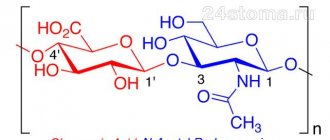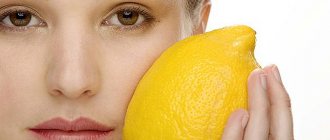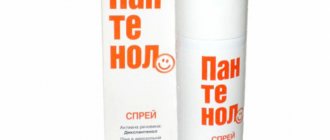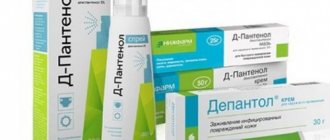Every person has encountered various types of skin damage more than once in their life. Such problems can be caused by a variety of reasons, ranging from domestic injuries to adverse environmental factors.
It is impossible to avoid skin injury in everyday life, but such damage can be treated. For this purpose, special creams and ointments can be used to heal wounds on the skin, which differ from each other in some characteristics. Before using this or that drug, you must read the instructions and consult your doctor.
Main types of chronic wounds
- Diabetic foot syndrome (DFS) is a set of anatomical and functional changes that develop against the background of diabetes mellitus, increasing the risk of injury and infection of the soft tissues of the foot. According to the World Health Organization, the risk of developing DDS in diabetics with 5-10 years of experience is about 15%. For diabetics with more than 15 years of experience, it increases to 90%.
- Prevention: protecting feet from injury, comprehensive foot and nail care, wearing shoes for diabetics.
- Trophic ulcers are complications of venous insufficiency caused by changes due to thrombophlebitis or deep vein varicose veins. Poor circulation and blood supply to the legs leads to venous congestion, and this leads to the formation of poorly healing ulcers on the ankles or legs.
- Symptoms are swelling, impaired skin pigmentation (redness or pallor), eczema, a feeling that the legs are bursting from pressure (more often in the evening).
- Prevention: timely treatment of the underlying disease, wearing elastic tights, treating the skin with antiseptic and healing agents.
Purpose of the cream
Regenerating creams are medical and professional cosmetics, mainly used in medical institutions and industries to restore the condition of the skin. The most negative effects are experienced by the skin of the hands of representatives of the following professions and specialties:
- builders;
- medical workers;
- catering staff;
- chemical industry workers;
- beauty salon employees;
- cleaning service workers.
Constant contact with chemical reagents, antiseptics, as well as the use of gloves lead to dry skin of the hands and negatively affect its condition. Deprived of moisture and a protective bacterial layer, the dermis cracks and undergoes inflammatory processes. To avoid such influence of professional factors, regenerating hand creams were included in the list of personal protective equipment at the legislative level.
Regenerating creams stand apart from other skin care cosmetics, because their rich and powerful formula classifies them as medicinal. They stimulate the protective functions of the integument, help to effectively restore the water balance in tissues, as well as heal microcracks and restore elasticity, firmness and a healthy appearance to the skin.
How to cure a chronic wound?
But what to do if prevention does not help? Treatment of long-term non-healing wounds depends on their type, the condition of the patient and the underlying disease. The main thing is to identify the root cause of the resulting pathologies in order to prevent the condition from worsening.
Treatment of diabetic foot syndrome:
- Taking antibiotics prescribed by a doctor against infection, treating and cleaning wounds by the doctor himself.
- Quitting bad habits and reducing the load on the foot.
- Selection of shoes and socks on the recommendation of a doctor, changing them regularly.
- Continue therapy at home: clean the wound, monitor discharge, and protect it from infection.
Treatment of trophic ulcers:
- Conservative therapy - taking medications to eliminate the symptoms of trophic lesions: antibiotics, phlebotonics, antiplatelet agents, as well as ointments for treating the skin (Solcoseryl, Actoverig, Tocopherol).
- Treatment of affected tissues with an ointment containing an antiseptic, an anesthetic or enzymes that accelerate healing (Levomekol, Levosin, Curiosin). Used with compresses.
- Surgery – after the ulcers have healed, the doctor restores blood flow through shunting and phlebectomy.
Treatment of bedsores:
- Restoring blood circulation using anti-decubitus circles, anti-decubitus mattresses, pillows.
- Cleansing the damaged area of necrotic tissue. If necessary, the doctor prescribes antibiotics to prevent infection. Surgical removal of necrotic masses is also possible.
- Procedures for healing bedsores include regular dressings with the use of wound-healing drugs.
How to make regenerating cream at home?
You can make a nourishing and effective regenerating cream at home. To do this, you need to purchase certain components for cream making in specialized stores: lanolin, liquid lethicin, beeswax, apricot oil and glycerin.
Place 1/4 cup of apricot oil, 7 g, in a glass container. beeswax, 1 tsp. liquid lethicin, 1 tsp. lanolin. In a water bath, the components should be dissolved and mixed until smooth, and then gently brought to a boil. Remove the container from the heat and leave to cool. Glycerin is added to the cool mixture, after which it is thoroughly kneaded again. The finished cream is placed in sterile jars and stored in the refrigerator.
The wide range of restorative creams presented on the modern market makes it much more difficult to find a really good product that can eliminate the effects of negative factors on the skin of the hands. But, knowing which components must be included in the composition, and also based on the severity of the problem you have, you can easily select the optimal product at a price that suits you. The main thing is not to get carried away with the use of regenerating creams, since, according to most cosmetologists, powerful products are not intended for daily care.
Products and dressings for the treatment of chronic wounds
The course of therapy is selected by the attending physician; you should not self-medicate - this can lead to a worsening of the situation.
Gels and solutions for rinsing and cleansing
- Gels fill subcutaneous pockets and cavities, providing an antimicrobial effect (Prontosan gel), cleanse necrotic masses (Askina gel, Hydrosorb gel), form an optimal environment for healing (Purilon gel), and work as an anti-inflammatory antimicrobial agent (Emalan collagen hydrogel).
- Prontosan sterile solution is suitable for preventing infections, cleaning and moisturizing wounds, helping in tissue regeneration and suppressing pathogenic microflora.
Fast wound healing
CONDITIONS
- The wound must be clean, free of foreign matter, dirt, particles, and non-viable tissue;
- The wound should not be infected;
- The wound should not remain open and in contact with the environment;
- Healing should occur in moderately
moist environment.
And now, in order: Condition of the wound.
It should not contain foreign particles, dirt, or non-viable tissue.
Any dirt, clotted blood and pus must be removed, that is, the wound must be treated and washed. Hydrogen peroxide, saline solution, or, in extreme cases, just clean water will do. If the wound is chronic, poorly healing with a dry, poorly detachable bottom (eschar), it is necessary to use a special gel ( Fibrogel Ag
or
Intrasite gel
) in combination with a secondary absorbent dressing (Allevyn Adhesive, Non Adhesive), or in combination with a breathable film dressing (Opsite FlexiFix , Opsite Flexigrid). However, if you have a deep chronic wound, we recommend that you first seek help from specialists.
Presence of infection.
The presence of an infectious process in the wound negatively affects the healing process.
If measures are not taken, the wound may become chronic, as a result of which the healing process may take a long period. It has long been proven that silver has a pronounced antibacterial effect, due to which the use of silver-containing dressings significantly helps to block the growth of bacteria and the development of infection in the wound. If there is an infectious process, it is necessary to use a bandage with silver nanocrystals (Acticoat or Acticoat 7); Neofix Fibrotul Ag
. Matching headbands are here.
Closing the wound.
The wound must be protected from environmental influences and infection. If the wound is small, an abrasion or a scratch, it is enough to treat it with a special film spray (Opsite Spray) or cover it with a breathable film bandage (Opsite FlexiFix, Opsite Flexigrid). The dressing for wounds of medium size and depth should be sterile, impervious to moisture and microorganisms from the outside, and also facilitate the absorption of exudate and removal of excess moisture (Neofix Post, Opsite Post Op, Opsite Post Op Visible).
Humid environment.
It was previously believed that for a wound to heal quickly, it should be as dry as possible, but modern experience shows that for successful and rapid wound healing, a moderately moist environment must be maintained in it. In a humid environment, enzymes and growth factors are most active and cell growth and reproduction are more active, but excess moisture must be removed. Optimal moisture in the wound is maintained with breathable patches (Neofix Post, Opsite Post Op, Opsite Post Op Visible) when there is little exudate, or sponge dressings when there is a lot of discharge (Allevyn Adhesive, Non Adhesive).
WHAT TO DO?
- Assess the wound. Large, deep, bitten, scalped, lacerated wounds and wounds with heavy bleeding require qualified medical care; self-medication in this case is dangerous.
- Clean the wound - rinse with hydrogen peroxide, it will help remove small foreign objects, particles of dirt, non-viable tissue, and blood clots from the wound. If there is no hydrogen peroxide, then you can simply wash the wound with water or saline;
- Treat the edges of the wound. In this case, iodine or a solution of brilliant green (brilliant green) is suitable. To prevent wound infection, you can use a silver-containing dressing, Neofix Fibrotul Ag, fixing it on the wound with a patch or film type bandage (Opsite FlexiFix, Opsite Flexigrid);
- You can also simply cover the wound after treatment with a non-stick, breathable, moist dressing. Or a patch with the same properties. In this case, any adhesive bandage on a non-woven or film base (Neofix Post, Opsite Post Op) is suitable.
If the wound is small, then you need to do the following:
CONCLUSION OF WOUND EDGES
For additional fastening of the edges of a sutured wound, as well as for bringing together the edges of an incised wound after treatment, you can use LEUKOSTRIP adhesive strips. They reliably fix the edges of the wound, allow air to pass through, and remove excess moisture.
SUPERFICIAL WOUNDS, EXTENSIVE Abrasions
To ensure healing of a superficial wound, non-adhesive mesh dressings containing paraffin (Jelonet) are used as the primary wound covering. If there is a risk of wound infection, as well as to prevent infectious complications, a mesh dressing containing soft paraffin and an antiseptic (Bactigras) can be used as a primary wound covering. To remove excess fluid (exudate), an absorbent secondary layer is applied over the mesh bandage - a sponge bandage (Allevyn Adhesive, Allevyn Non Adhesive). Fixation can be achieved using a breathable film bandage (Opsite Flexifix, Opsite Flexigrid).
WOUNDS ON THE FACE
Wounds on the face require a special approach, since wound healing should lead to minimal cosmetic defects. For additional reduction of the edges of the wound, if the wound is sutured, or as a primary dressing, you can use special adhesive strips - strips (Leukostrip). The range of leading manufacturers of plasters includes a large number of simulated bandages (cut to size), with which you can carefully close the wound. If a scar has formed after healing, you can use a special silicone bandage that is designed to reduce and eliminate scars (Cica-Care). You can buy Cica-Care silicone patch here.
POST-OPERATIVE WOUNDS
We recommend covering postoperative wounds with specialized dressings. The structure of the dressing provides a favorable environment for healing and its painless change when dressing. Thanks to the inner layer, the bandage is securely fixed to the skin, but later it can be easily and painlessly removed. The middle, absorbent layer, consisting of viscose or polyurethane foam, ensures quick and reliable removal of exudate. The outer film or non-woven layer ensures rapid and constant evaporation of excess moisture. Among non-woven based dressings, we recommend using Neofix Post and Primapore. Among film-based dressings, Opsite Post Op and Opsite Post Op Visible have proven themselves to be excellent.
PURPUS WOUNDS
The presence of pus in the wound indicates that an infectious process has begun. Treatment of purulent wounds, especially large and deep ones, requires qualified medical care and an integrated approach. For such a case, we can recommend the following dressings: - For cleaning a wound with a dry, poorly detachable bottom (scab), or in the presence of a dense fibrin film at the bottom of the wound, hydrogel (Intrasite Gel) has proven itself very well. It must be applied to the surface of the wound, and then covered with a secondary film or sponge bandage. After 48 hours, the wound needs to be washed and cleaned. — For the treatment of purulent wounds, dressings with silver nanocrystals (Acticoat and Acticoat 7) have proven themselves to be excellent. Silver, acting as an antiseptic, is released gradually, providing a long-lasting and permanent effect. Acticoat dressing can be left on the wound for up to 3 days, Acticoat 7 for up to seven days. These dressings are primary; after application to the wound, they must be covered with a secondary absorbent dressing. Before use, silver-containing dressings must be moistened with distilled water or water for injection. Go to CATALOG OF BANDAGES
What types of wounds are there?
The healing process and time of damage largely depend on its type. Wounds, according to the factors that caused them, are divided into the following types:
- puncture wounds are injuries caused by a thin object pointed at the end (an awl, a knitting needle), which are distinguished by significant depth in relation to width. In the vast majority of cases, puncture wounds practically do not bleed and this can cause a dangerous misconception that they are not dangerous and, as a result, late seeking medical help. In fact, with a stab wound, damage to internal organs is often observed, as well as internal bleeding, often intense. In this case, blood accumulates, for example, in the abdominal cavity. A narrow wound channel blocks the access of oxygen to the damaged surface, which becomes fertile ground for the development of extremely dangerous gangrenous bacteria;
- incised wounds are injuries caused by a narrow, pointed object. They can also penetrate to a considerable depth, but, unlike stab wounds, they bleed much more, since in the process of inflicting such a wound a large number of blood vessels are damaged. The edges of such a wound are smooth;
- chopped wounds are injuries inflicted by a heavy pointed object (axe, shovel). The edges are often uneven, crushed, the wounds are usually deep;
- lacerations - usually occur with intense mechanical impact on a large area of skin. The edges are uneven, often the skin peels off from the underlying tissues with the formation of a scalped wound, and intense bleeding is not uncommon;
- Bite wounds are wounds that occur as a result of the impact of the teeth of an animal or a person on the body. On the teeth, as a rule, there is plaque with specific microorganisms, which often provoke significant inflammation in the wound;
- Contusion wounds are wounds caused by blunt force trauma. The skin and underlying tissues in the damaged area often become dead. Bleeding is usually minor, interstitial with the formation of a hematoma;
- A gunshot wound is a wound caused by a firearm. It is characterized by significant damage to the tissue around the wound channel due to the impact of bullet energy on them, as well as the presence of particles of clothing and gunpowder in the channel;
- burn wounds are wounds caused by exposure of the skin to thermal energy or concentrated alkalis/acids. The intensity of damage to the skin and underlying tissue depends on the severity of the burn.
What to expect from treatment?
With proper care, the surface of the ulcer closes after 1.5 months. The use of vacuum therapy speeds up healing:
- Optimizes blood flow,
- Reduces swelling of local tissues,
- Removes excess fluid that can slow down cell growth,
- Reduces the number of bacteria.
- In addition, negative pressure changes the structure of cells in the wound layer, causing a cascade of intracellular signals that increase the rate of cell division and formation of granulation tissue.
There are a number of contraindications for vacuum therapy:
- malignant wounds;
- osteomyelitis without adequate treatment;
- necrosis with crust formation.
In such cases, cleansing is carried out using enzyme preparations and active surgical dressings. It is important to understand that cleansing trophic ulcers is an auxiliary method of treatment and in itself cannot lead to healing of the ulcer without eliminating the causes of its appearance.
Iodine/povidone-iodine
Used in an alcohol solution (the so-called “tincture of iodine”) or in Lugol’s solution. Only the edges of the wound are treated with iodine so as not to cause soft tissue burns. The great advantage of iodine is its wide spectrum of antimicrobial activity: it kills all major pathogens and, with prolonged exposure, even spores - the most resistant forms of microorganisms. The use of large amounts of iodine is contraindicated in cases of hypersensitivity to it, hyperfunction of the thyroid gland, thyroid formations, dermatitis, and kidney diseases. Application to mucous membranes is not advisable, especially in children.
Octenidine (octenidine dihydrochloride)
A cationic surfactant with antimicrobial activity against gram-positive and gram-negative bacteria, viruses, as well as against yeast-like fungi and dermatophytes (fungi that feed on keratin and cause dermatomycosis). Similar in action to quaternary ammonium compounds (QAC). The damaged surface is completely processed. Can be used on mucous membranes. The antiseptic has no age restrictions and is used for children. Currently, it is the drug of choice in Europe as an antiseptic due to its wide spectrum of action and maximum speed of achieving effect.
Table 1. Comparative characteristics of the main antiseptic agents
| Antiseptic | For leather processing | For treating wounds | For mucous membranes | Applicability for children |
| Ethanol | + | _ | _ | — |
| Hydrogen peroxide | + | + | + | + |
| Iodine | + | _ | — / + | — / + |
| Chlorhexidine | + | + | + | + |
| Potassium permanganate | + | _ | _ | + |
| Diamond green | + | _ | _ | + |
| Fukortsin | + | _ | _ | _ |
| Benzyldimethylmyristoylaminopropylammonium | + | + | + | + |
| Octenidine | + | + | + | + |
Doctor's consultation: when is it necessary?
It is recommended to see a doctor, even if the wound does not seem serious. In addition, there are a number of cases when you cannot do without the help of a specialist. Such cases include:
- continued bleeding from the wound - it may be necessary to stop it by ligating the vessel, applying a suture, or using a hemostatic sponge;
- foreign bodies remaining in the wound, contamination;
- wounds caused by heavily contaminated, rusty, painted, grease-coated objects;
- wounds with signs of inflammation;
- wounds caused by animals;
- suspicion of a fracture, dislocation, ligament rupture.
In addition, it is not recommended to try to use certain medications on your own. The doctor prescribes an ointment for wound epithelization.
Vacuum cleaning of wounds
Vacuum therapy or negative pressure therapy is a method of removing serous fluid and dead tissue from a wound or surgical site. Currently, vacuum ulcer debridement can be used on all types of wounds: acute, subacute or chronic. It reduces swelling, promotes rapid healing and the formation of young connective tissue.
The essence of the method is that a piece of porous sponge with silver ions is inserted into the wound, then the whole thing is covered with a transparent membrane. A hole is made in it and a drainage tube is inserted, which is connected to a vacuum source. The fluid is drawn from the wound through the sponge into a reservoir for subsequent disposal.
The membrane prevents air from entering and allows a vacuum to form inside the wound, reducing its volume and making it easier to remove fluid. Before starting the procedure, the ulcer should be washed.
The duration of treatment depends on the size and depth of the wound. The dressing is changed every 24-48 hours.
At the first aid stage
The process of its healing in the future largely depends on how effectively and competently first aid is provided when receiving a wound. Therefore, as first aid you need:
- stop the bleeding,
- wash the wound, clean it of dirt and foreign bodies.
To stop bleeding, a tourniquet is used (when applied, be sure to indicate the time when it was applied) or a pressure bandage. It is advisable to wash the wound with an antiseptic solution, hydrogen peroxide (which, by the way, helps stop bleeding) or, in extreme cases, with clean water. It is important to remove any foreign particles from the wound surface - each of them can subsequently become a source of purulent inflammation and, as a consequence, complications of wound healing. Large debris, slivers, and fragments are removed using tweezers.
Post-burn medications
Ointments for the treatment of burns have an analgesic, antibacterial and healing effect. Such drugs stimulate regenerative processes in skin cells and prevent the formation of scar tissue.
Effective ointments for healing burns:
- Actovegin;
- Levomekol;
- Povidone-iodine;
- Solcoseryl;
- Dexpan plus;
- Miramistin.
Povidone-iodine
The drug is in the form of an antiseptic gel, in which iodine acts as the active substance. It accelerates healing and relieves inflammation, penetrating deep into the tissue.
Povidone iodine is most often used to treat burns and infections. Can be used to eliminate pimples and acne. When applied to the skin, rub the ointment well. Wash off any remaining residue after 15 minutes.
Solcoseryl
This drug acts in different directions, so it can be used to treat various dermatological lesions. It is used to heal ordinary scratches, as well as burns and bedsores. Solcoseryl promotes rapid skin restoration after surgery.
The ointment should be applied to the damaged areas twice a day. It is also allowed to apply semi-closed bandages. The course of therapy should last at least two weeks.
Actovegin
This drug shows high effectiveness against various dermatological lesions. Actovegin can be used to heal weeping ulcers, bedsores, against burns and inflammation.
To treat wounds, the product must be applied to the damaged areas and covered with a bandage, changing it 3-4 times a day.
Dexpan plus
The cream relieves inflammation well and helps wound healing. It soothes irritation and itching, stimulates regeneration processes.
It is recommended to apply Dexpan Plus to treat cracks, burns and abrasions. The cream is rubbed into damaged areas 2-3 times a day.









